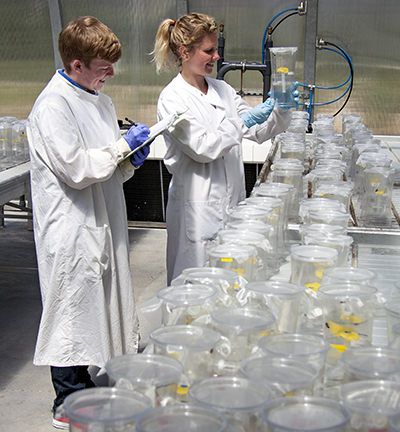A licensing / collaboration opportunity with the UK Centre for Ecology & Hydrology
Insect hoarding cage for toxicology assay
Benefits
- Longer subject life than standard cages enabling extended studies
- Reduction in subject stress due to handling and feeding mechanisms
- Flexible modular apparatus enabling multiples of test to be undertaken
- Cost effective to deploy at scale
- Improved feeding and toxin dose control
- Easily cleanable and recyclable
- Transparent to allow visual and photo-telemetric studies
- Suitable for different bee species (Apis, Bombus, Osmia)
Offer : licensing/development collaboration

Technical description
Apparatus for the in vivo application of toxins (and other stressors) to insects for the purposes of standard OECD or European Food Standards Agency toxicology tests. The 'hoarding cage' has been developed for the purposes of a European Food Standards Agency report on "Toxicity of pesticides and contaminants to three bee species" (EFSA Supporting publication 2016: EN-1076fn1).
The prototype apparatus is modular and made of transparent plastic, consisting of a hoarding chamber, feeding chamber and dose applicator. Simple mechanisms enable the loading and unloading of subjects for study.
Development stage
- TRL 6: A novel insect hoarding cage developed for EFSA study
Potential applications
- Insect particularly bee toxicology to OECD and EFSA standards
- Insect behaviour studies in the laboratory or for the home leisure market
IP rights
UK patent filed (ref. 1700539.8: 12 Jan 2017)
References
1 Centre for Ecology & Hydrology (2016) Chronic oral lethal and sub-lethal toxicities of different binary mixtures of pesticides and contaminants in bees (Apis mellifera, Osmia bicornis and Bombus terrestris). European Food Standards Agency, supporting publication. DOI: 10.2903/sp.efsa.2016.EN-1076